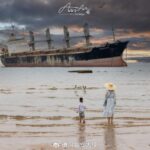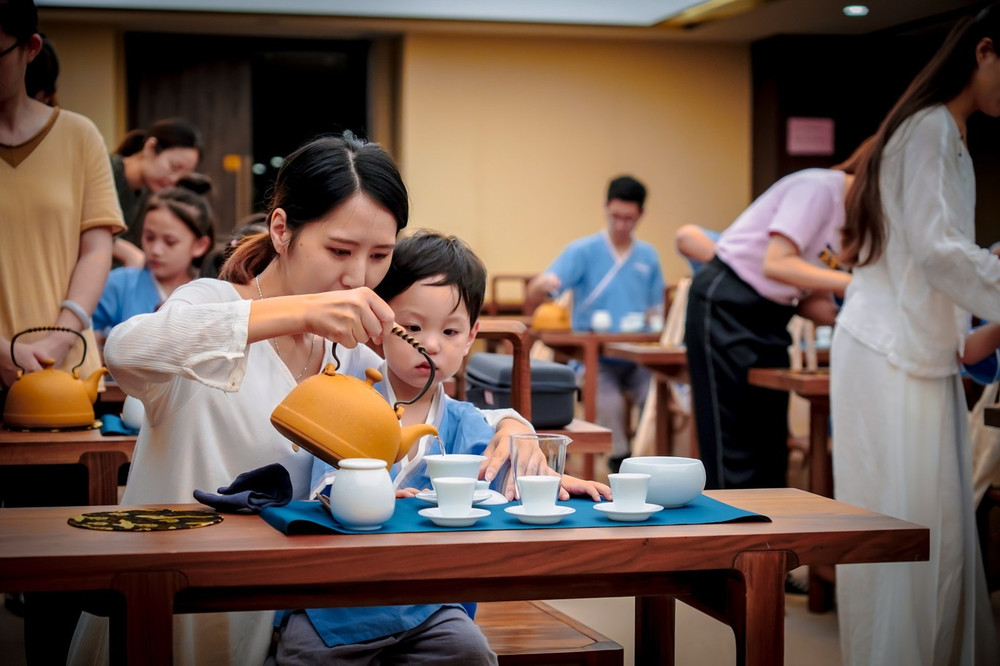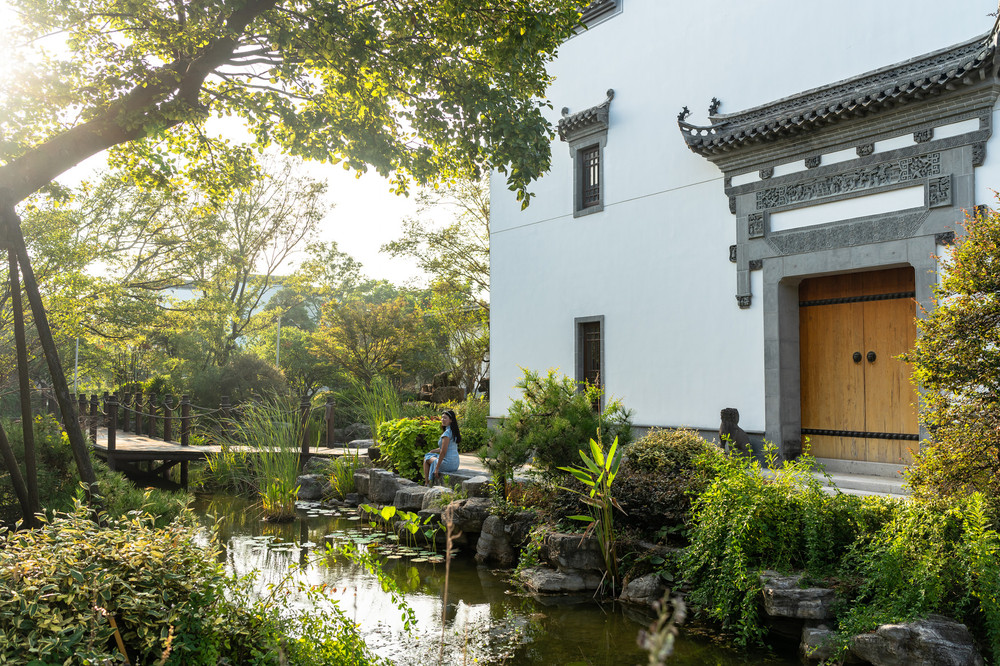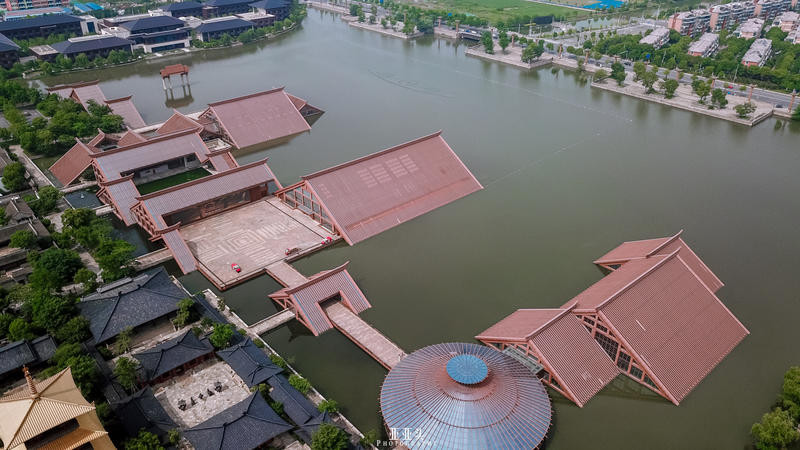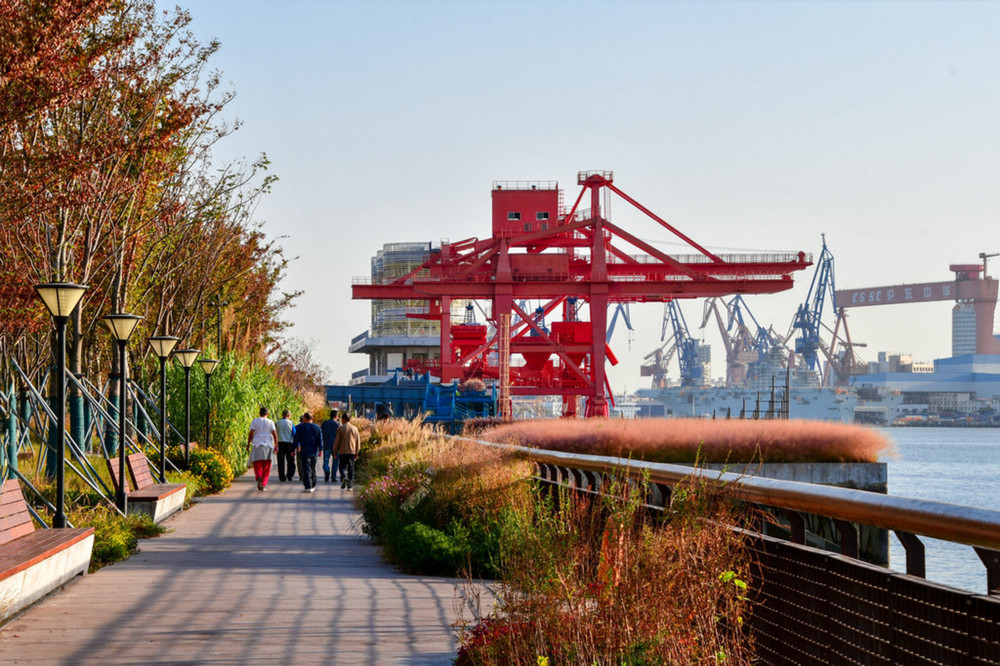**Trip to Macao and Shanghai: A Cultural and Historical Journey**

—
**Duration: 8 Days**
**Time: November**
**Cost per Person: 5000 Yuan**
**Travel Companions: Solo**
**Activities:**
– Food Exploration
– Photography
– Cultural Immersion
– Free Traveling
– Train Travel
– Budget Traveling
**Author’s Visited Places:**
1. Soong Ching Ling’s Former Residence Memorial Hall
2. Zhou Enlai’s Former Residence
3. Sun Yat-sen’s Former Residence Memorial Hall
4. Mao Zedong’s Former Residence
5. Shanghai Natural History Museum
6. Nanjing Road Pedestrian Street
7. The Bund
8. Sun Yat-sen Memorial Hall
9. People’s Square
10. Shanghai Museum
11. Huangpu River
12. Yuexiu Park
13. Guangdong Museum
14. Canton Tower
15. Huacheng Square
16. Observation Tower
17. Whampoa Military Academy’s Former Site Memorial Hall
18. Qixing Rock
19. Dinghu Mountain
20. Butterfly Valley
21. Feishui Tan
22. Qingyun Temple
23. Macao Special Administrative Region Government Headquarters
24. Macao Historic Centre
25. Ruins of St. Paul’s
26. Macau Peninsula
27. Coloane Island
28. Hac Sa Beach
29. Senado Square
30. St. Paul’s Church
31. Maritime Museum
32. Port Authority Building
33. Zheng’s Family Mansion
34. The Peak Theatre
35. City of Dreams
36. A-Ma Temple
37. Barra Fortress
38. Macao Museum
39. The Venetian Macao
40. Wynn Hotel
41. Six Dynasties Museum
42. Jiangsu Art Museum
43. Bilu Temple
44. Confucius Temple
**Published on: 2020-12-11 14:37**
**Macao Travelogue**
Macao, officially known as the Macao Special Administrative Region, has been back to its motherland for 21 years under the ‘One Country, Two Systems’ policy. I’ve always wanted to visit Macao in person and after making up my mind, I started researching and planning my trip to Macao. I decided to transfer in Shanghai and then fly to Guangzhou.
**Day 1: November 30th – Arrival in Shanghai**
On the evening of November 30th, I flew from Dalian to Shanghai and had initially planned to spend a whole day at Disneyland the next day, but I gave up at the last minute. Overall, I am more interested in history, culture, and natural landscapes.
**Day 2: December 1st – Shanghai Itinerary**
– Soong Ching Ling’s Former Residence Memorial Hall
– Zhou Enlai’s Former Residence
– Sun Yat-sen’s Former Residence Memorial Hall
– Mao Zedong’s Former Residence
– Shanghai Natural History Museum
– Nanjing Road Pedestrian Street
– The Bund
**Soong Ching Ling’s Former Residence Memorial Hall**
After breakfast, I strolled along the street and arrived at Soong Ching Ling’s Former Residence Memorial Hall at 9 am. The hall is of high standard, with good service and detailed explanations. After visiting, I felt a sense of reverence. The large lawn in front of the main building is very famous; Soong Ching Ling had met many Chinese and foreign guests on this lawn.
**Zhou Enlai’s Former Residence**
After leaving Soong Ching Ling’s Memorial Hall, I walked along the street for about ten minutes to Zhou Enlai’s Former Residence. This is the site of the Chinese Communist Party delegation’s office in Shanghai during the first cooperation between the Nationalist Party and the Communist Party. Zhou Enlai, Dong Biwu, and other party leaders had worked and fought here. Since Zhou Enlai was in charge of the daily work, it is also called Zhou Enlai’s Former Residence. The explanations inside the hall are quite vivid, allowing one to feel the tense atmosphere of that era.
**Sun Yat-sen’s Former Residence Memorial Hall**
Sun Yat-sen’s Former Residence Memorial Hall is very close to Zhou Enlai’s Former Residence. This is the place where Sun Yat-sen lived in the last ten years of his life, living here with Soong Ching Ling for eight years, the longest period they lived together. The museum displays some of Sun Yat-sen’s life stories. Some of Sun Yat-sen’s thoughts and works that influenced the Chinese revolution were born here. Unfortunately, photography is not allowed inside.
**Mao Zedong’s Former Residence**
Not far from the Sun Yat-sen Memorial Hall is the former residence of Mao Zedong. This was the residence where Mao Zedong and Yang Kaihui lived together when he was working in Shanghai in 1924. Mao Zedong had been to Shanghai more than ten times. This is the place where Mao Zedong lived for the longest time. During his work here, Mao Zedong’s leadership level and work ability were improved. At the same time, during this period, Mao Zedong had a new and fundamental understanding of the Chinese revolution. He realized that peasants and armed struggles are two basic issues of the Chinese revolution. We must vigorously carry out the peasant movement and create a revolutionary road of encircling the cities from the countryside and seizing political power by armed forces. The formation of these thoughts influenced the entire China later.
**Shanghai Natural History Museum and The Bund**
Leaving the former residence of Mao Zedong, take the subway to People’s Square. Here are the Shanghai Museum and the Shanghai Natural History Museum. I have visited the Shanghai Museum before, so this time I will visit the Shanghai Natural History Museum. The area here is large and there are many exhibits. I strolled around for more than an hour. After leaving the Shanghai Natural History Museum, it was still early. Looking at the map, I chose to stroll in the direction of Nanjing Road. In the evening, along Nanjing Road Pedestrian Street, I slowly strolled to the Bund. When I arrived at the Bund, the sky was getting dark. Various ships on the Huangpu River were coming and going, presenting a busy scene.
—
This trip was a journey through history, culture, and the natural beauty of Macao and Shanghai. Each place visited had its own story to tell, and I am grateful for the experiences and knowledge gained during this trip.**Standing on the Bund and looking at the scenery on both sides of the Huangpu River, one can feel the extraordinary charm of Shanghai.**
According to the scheduled plan, I took a flight from Shanghai to Guangzhou at night. When boarding the plane, I was pleasantly surprised to find that the plane I was taking was a twin-aisle wide-body passenger plane. This is the second time I have taken a twin-aisle wide-body passenger plane. I took it once more than 20 years ago. Time passes so quickly. In a blink of an eye, 20 years have passed. It’s really a fleeting moment. I find that the most ruthless thing in this world is actually time.
After arriving in Guangzhou, in order to travel conveniently, I chose to stay in a hotel opposite Yuexiu Park. The room assigned to me by the hotel is on the 15th floor. The room is very large and has a large floor-to-ceiling window from which I can overlook the lush Yuexiu Park. The view is very open.
When I got up early in the morning, I checked the weather forecast. The highest temperature that day was 25 degrees Celsius. It was neither cold nor hot, very suitable for traveling. In contrast, it is said that it has started snowing in Dalian.
**December 2 Itinerary: Guangdong Museum, Canton Tower, Marshal Sun Yat-sen’s Mansion.**
In the morning, take the subway to Huacheng Square first. Here are the Guangdong Museum, Guangzhou Grand Theater, and Guangzhou Library. There are many high-rise buildings around. Opposite is the Canton Tower across the river. Looking at the Canton Tower from a distance, it is dignified and graceful, very beautiful.
The Guangdong Museum has a square appearance and a large area. It seems to be nicknamed the ‘candy box’. It is a comprehensive exhibition hall integrating nature, human history, astronomy and geography. Among them, the sea lily fossil is one of the treasures of the museum and is the second largest in China.
Encountering a tour group of elderly ladies with southern accents, I journeyed with them, listening to detailed explanations while viewing the exhibits. At the end of the tour, as the guide bid farewell, an elderly lady with glasses earnestly began to share her wisdom on life, speaking for about 20 minutes. The guide was astonished, nodding and agreeing awkwardly yet politely throughout.
After leaving the Guangdong Museum, I took the subway that crosses the river to reach the Canton Tower. Standing at 600 meters tall, the Canton Tower is currently the tallest tourist attraction in China and the third highest in the world, known as the new landmark of Guangzhou, colloquially referred to as the ‘Slim Waist.’ I purchased a 150 yuan ticket to ascend the tower. Upon reaching the top, the clear weather allowed for a panoramic view of the Pearl River banks, enjoying the beautiful scenery of the city, which was fantastic.
After departing from the Canton Tower, I took a bus to visit the Former Residence of the Commander-in-Chief. This site was the headquarters of Sun Yat-sen’s revolutionary government in Guangzhou, and through the visit, I gained a deeper understanding of Sun Yat-sen’s revolutionary journey.
Guangzhou, not only economically prosperous, is also a city of culinary delights. In the evening, I found a buffet restaurant and enjoyed a hot pot meal.
**On December 3rd, the itinerary included: Sun Yat-sen Memorial, Sun Yat-sen’s Memorial Room, Whampoa Military Academy, Sacred Heart Cathedral, Guangzhou Liberation Monument, Museum of the Mausoleum of the King of Nanyue of the Western Han Dynasty, and the Five Goats Statue.**
The next morning, I first visited the Guangzhou First People’s Hospital, which is very close to the hotel, a 20-minute walk away. To travel to Macao from the mainland, a nucleic acid test report within seven days is required. The hospital was crowded, and the test cost was 70 yuan, which was more expensive than the 105 yuan I paid at Dalian Central Hospital in Dalian.
After leaving the hospital, I headed to the Whampoa Military Academy. The site is quite far from the city center, requiring a subway ride, a ferry, and then a ten-minute walk. The Whampoa Military Academy is a very famous place in modern Chinese history, often mentioned in films and TV series about the war of resistance and liberation. It was an honor for soldiers of that era to study there. The academy was founded during the first cooperation between the Nationalist Party and the Communist Party, training many generals from both parties, such as Ye Jianying, Chen Yi, Chen Geng, Xu Xiangqian, and Lin Biao. Chiang Kai-shek once served as the principal, and Zhou Enlai was the director of the political department. This is theHowever, due to the pandemic, it was not open to the public.
Not far from the church stands the Guangzhou Liberation Monument. After visiting, take the subway to the First People’s Hospital of Guangzhou to collect your nucleic acid test report. Upon leaving the hospital, it takes about a 20-minute walk to reach the Museum of the Mausoleum of the Nanyue King. This site is the location of the tomb of the second Nanyue King. The tomb chamber is open to the public, covering an area of approximately 100 square meters. This was the first time in my life that I had entered the interior of an imperial tomb. What struck me was the presence of fifteen burial figures accompanying the Nanyue King. These figures were not in coffins but laid flat in various places within the tomb chamber. After more than 2000 years, except for a trace of the right consort’s bones, the rest of the burial remains have turned to dust, leaving only faint traces of human form, truly embodying the saying ‘dust to dust, earth to earth.’ Time can destroy everything, even if one once possessed great wealth and honor. Thus, money and status will all turn to dust a hundred years later. Eating, drinking, and traveling when one wishes is the true way of life! The museum displays the funerary objects from the tomb, which are very rich and exquisite. The treasure of the museum is a silk-threaded jade burial suit, which is not the golden-threaded jade burial suit commonly seen among Han dynasty monarchs.
After leaving the Museum of the Mausoleum of the Nanyue King, as the evening approached, I walked to the opposite Yuexiu Park for a visit. The famous Five Rams Statue is located inside Yuexiu Park. The Five Rams Statue is a symbol of Guangzhou, representing the spirit of the people of Guangzhou. It is said that more than 2000 years ago, five immortals rode five sheep carrying grains of rice and flew to Guangzhou, giving the grains to the people. Afterwards, the five sheep turned into stone sheep, and since then, Guangzhou has become a land of abundance, earning the nicknames ‘City of Rams’ and ‘City of Ears.’
On December 4th, the itinerary included the Seven Star Crater Scenic Area and Dinghu Mountain Scenic Area in Zhaoqing City. Not far from Guangzhou, there is the Seven Star Crater Scenic Area, a 5A-level tourist attraction. I have known since childhood that Seven Star Crater is a famous tourist spot in Guangdong, so visiting it during this trip to Guangzhou was also on the schedule. Looking at the map, it is located in Zhaoqing City, about an hour’s ride by intercity high-speed train, and my hotel is very close to the train station, making travel very convenient. In the morning, I took the high-speed train to Zhaoqing Station and then a bus for about 5 minutes to reach the Seven Star Crater Scenic Area. Upon reading the introduction, Zhaoqing City has two 5A-level scenic areas, namely the Seven Star Crater Scenic Area and Dinghu Mountain Scenic Area, collectively known as Xinghu Scenic Area. The two scenic areas are 16 kilometers apart and are connected by a scenic area bus with a combined ticket price of 120 yuan. The Seven Star Crater Scenic Area has been a popular tourist destination since the Tang Dynasty. It features typical karst topography, with peaks, lakes, caves, and inscriptions as the main attractions, and is known as the first wonder of Lingnan.
Upon entering the scenic area, we first embarked on a cruise to explore the main attractions. Afterwards, we boarded bamboo rafts to get up close to the seven rock peaks, enjoying the refreshing scenery along the banks. The sensation of gliding on the bamboo rafts was exhilarating! These unique trees, naturally growing in the water, are abundant within the scenic area. According to our guide, the foliage changes its color throughout the year. The reclining Buddha within the area is said to be the second-largest natural reclining Buddha in Asia. Upon closer inspection, it indeed bears a striking resemblance. The cave within the scenic area, though not extensive, offers an interesting experience as we navigated through it by boat, listening to the boatman’s commentary. We then took the scenic area’s shuttle bus from the entrance to Dinghu Mountain Scenic Area. Established in 1956, Dinghu Mountain Scenic Area is China’s first nature reserve, renowned for its diverse vegetation and dubbed the ‘Great Natural Oxygen Bar’. It houses a large cauldron weighing 16 tons and a 2-ton Duan inkstone, both holding Guinness World Records. The central lake area features a heart-shaped islet, offering a beautiful panoramic view from the top. Downstream of the lake lies ButterflyAfter a half-hour walk from Feishuitan, we reached Qingyun Temple, where Sun Yat-sen once visited and left an inscription.
On December 5th: Gongbei Port, the headquarters of the Macao Special Administrative Region Government, the pedestrian street of the Historic Centre of Macao, and the Ruins of St. Paul’s (a landmark in Macao). After touring Zhaoqing, we took a high-speed train to Zhuhai early the next morning. Upon exiting Zhuhai Railway Station, Gongbei Port was conveniently located next to it, just a 2-3 minute walk away.
Before departing, I first purchased a 3-day data package for 27 yuan, as using the package in Macao would be expensive due to roaming charges. By purchasing a data package, I could connect to the local Macao telecommunications provider CTM by setting up my phone, saving a significant amount on internet fees. After setting up, my phone screen changed immediately. Secondly, I prepared the Macao Health Code by converting it from the Guangdong Health Code, which automatically included my negative nucleic acid test information, eliminating the need to provide a paper test result when crossing the border. Lastly, I exchanged 350 Macao Patacas (formerly known as Portuguese Patacas) for backup. There are many exchange points on both sides of Gongbei Port, and I felt that the mainland side was more legitimate. The exchange rate that day was 100 RMB for 116 Macao Patacas and 113 Hong Kong Dollars. There were also many exchange points on the Macao side, but they were mostly small street shops offering 100 RMB for 118 Macao Patacas.
I crossed the border into Macao from Zhuhai at noon on the same day. It was likely the peak hour for crossing, with a massive crowd surging like tidal waves. Upon exiting the mainland, the self-service method was used, but upon entering Macao, as it was my first time, I had to go through a manual entry process. Contrary to my expectations of being questioned by the immigration officer, the officer merely glanced at me and the process was over in about 3 seconds. Due to the long queue, the entire entry and exit procedure took approximately 20 minutes. After entering Macao, I took a public bus to my hotel. All bus routes in Macao cost 6 Macao Patacas. As I traveled along the streets to the hotel, I noticed that due to the limited land resources and small area of Macao, the streets in the old town are very narrow, and even the buses are small and crowded. Being accustomed to the large buses in the mainland, it felt somewhat uncomfortable. Additionally, vehicles in Macao are right-hand drive, and they drive on the left side of the road, which is completely opposite to the mainland, and it took me a while to get used to it.
Macao mainly consists of three parts: the Macao Peninsula, Taipa Island, and Coloane Island. Upon studying the map, I found that the city center and most historical and cultural attractions are located on the Macao Peninsula, while the famous Senado Square and several renowned hotels are on Taipa Island, and Coloane Island is primarily known for its beaches and scenic spots. For convenience, I chose a hotel on the Macao Peninsula, which is about a 5-minute walk from the city center, 10 minutes from the historical district, and 15 minutes from the Ruins of St. Paul’s. The hotel faces the Macao Tower across the lake, next to the Consulate of Portugal in Macao and a Portuguese villa area, with a particularly pleasant environment. Since this was an overseas trip, I wanted to see how good Macao really is, so I booked a five-star hotel. This was my second time staying in a five-star hotel, and upon entering the room, I found it came with a miniature courtyard. The room facilities were excellent, far exceeding my expectations. It was truly impressive, and I wished I could stay longer. This is the headquarters building of the Macao Special Administrative Region, small and distinctly different from the government buildings on the mainland.
After leaving the hotel, I walked along the street for about 10 minutes to reach the historical district, which has many famous historical attractions and numerous tourist shops. I had heard that the pork chop buns in Hong Kong and Macao are quite famous, so I bought one to try while strolling around the historical district. It cost 20 Macao Patacas, was quite large, and filling enough for a meal. This is what the trash cans in Macao look like. This is the iconic landmark of Macao: the Ruins of St. Paul’s. Originally the front wall of St. Paul’s Church, built in 1604, it was the only part that survived after a massive fire that**Augustine’s Church and Other Landmarks in Macau**
*Augustine’s Church*: This historic site, built in 1591, showcases the architectural style of the European Renaissance. It serves as the largest gathering place for believers in the area. Upon my arrival, I found around 300 believers quietly listening to the choir singing hymns. The atmosphere was solemn, even more so than a company meeting for department-level cadres. The service included moments of standing, bowing heads, and speaking in what I presume was Portuguese. The congregation made the sign of the cross and shouted ‘Amen’ in unison, followed by more hymns and prayers. The entire service lasted about an hour, and I participated fully, finding the experience calming and uplifting.
*Municipal Affairs Bureau Building*: Formerly the city hall, this building was constructed in 1784 and exhibits Baroque architectural style.
*St. Dominic’s Church*: Established in 1587, this church also features Baroque architecture and houses over 300 precious cultural relics. A ceremony was underway, led by a foreign bishop, with a predominantly foreign congregation. The service was conducted in English, with hymns sung by a female lead in bel canto, creating a pleasant and ethereal atmosphere.
*Macau Tower*: After a satisfying meal of Macau cuisine at a five-star hotel, I strolled along the lake to aid digestion. Eventually, I reached the Macau Tower, ascending to its revolving restaurant at the top. Here, I enjoyed afternoon tea while taking in the clear and beautiful views of Macau.
**December 7 Itinerary: Exploring Macau’s Diverse Attractions**
*Morning in Taipa Island*: I started the day with a bus ride to Taipa Island, beginning at Rua do Cunha, Macau’s pedestrian street for tourist souvenirs. Although most shops were closed due to the early hour, the variety of Macau-characteristic commodities was impressive.
*Venetian Macao*: A short walk from Rua do Cunha, the Venetian Macao hotel features an imitation of Venice’s Grand Canal, a popular spot for tourists to check in on social media.
*The Parisian Macao*: Adjacent to this hotel stands a scaled-down replica of the Eiffel Tower, a striking sight that catches the eye.
*Studio City Macau*: This hotel boasts an 8-shaped ferris wheel in its center, a unique feature that sets it apart.
*A-Ma Temple*: After visiting the hotels, I returned to the Macau Peninsula to see A-Ma Temple, the earliest temple in Macau, dating back to the Ming Dynasty.
*Wynn Fortune Tree*: Located in the city center, the Wynn Fortune Tree is housed within a large ball and is known to rise on the hour. Unfortunately, I missed the spectacle as it did not rise when expected, possibly due to the pandemic’s impact.
*Fortaleza do Monte*: Concluding my walk from Wynn Hotel, I reached the Fortaleza do Monte scenic spot after more than twenty minutes.
This itinerary encapsulates a day filled with cultural exploration and architectural marvels, providing a rich experience of Macau’s history and modern attractions.
—
**Fortaleza do Monte: A Historical Defense System**
*Built in 1617, Fortaleza do Monte was the epicenter of Macau’s defense system. The site boasts over 30 bronze cannons, a testament to its historical significance.*
—
**Unexpected Flight Changes**
*Originally, after touring Macau, I planned to fly back to Dalian from Zhuhai. However, a notice from the airline altered my plans, requiring a transfer in Nanjing before continuing to Dalian.*
—
**Smooth Border Crossing and Duty-Free Finds**
*On the afternoon of December 7, I returned to the mainland through Gongbei Port. The afternoon crossing was less crowded than at noon, taking only about ten minutes. Before entering the mainland, I visited the duty-free shop. Chinese cigarettes, priced at 320 Hong Kong dollars per pack, were a steal.*
—
**December 8 Itinerary: Exploring Nanjing’s Cultural Gems**
*Nanjing Museum of the Six Dynasties: After arriving in Nanjing, I took the subway to visit this museum, which is not very large but rich in history, focusing on the Six Dynasties period.*
*Jiangsu Art Museum: Adjacent to the history museum, this art museum houses numerous paintings, which I took the time to appreciate.*
*Pilu Temple: A short walk from the art museum, Pilu Temple is renowned for its ginkgo trees. Alas, my visit was a bit late in the season, and most of the ginkgo leaves had already fallen, leaving a withered scene.*
—
**Flight Delays and Confucius Temple Stroll**
*In the afternoon, another airline notification delayed my flight to Dalian until evening. With the extra time, I decided to explore the Confucius Temple scenic area at a leisurely pace.*
—
**Arrival in Dalian: A Sudden Seasonal Shift**
*Late at night, the plane landed safely in Dalian. Stepping out of the airport, I was greeted by a chilly breeze. The temperature had dropped below zero, a stark transition from the summer-like weather in Macao.*
—
**Reflections on a Memorable Trip**
*This trip to Macao was quite enjoyable and definitely warrants another visit. Thank you for joining me on this journey.*
—


